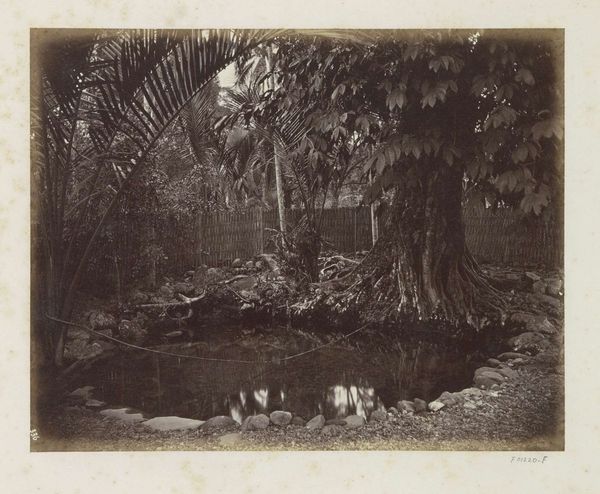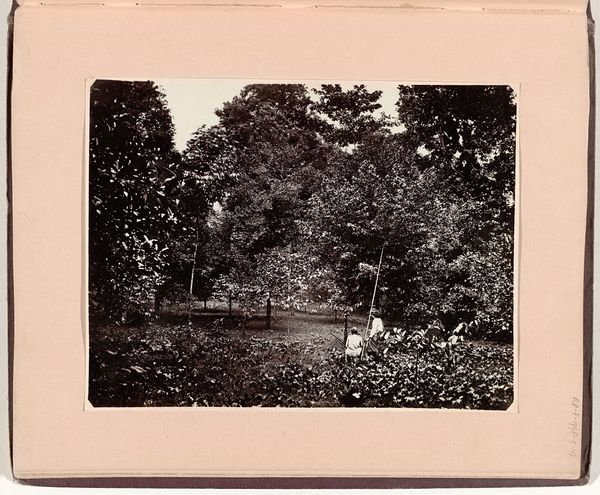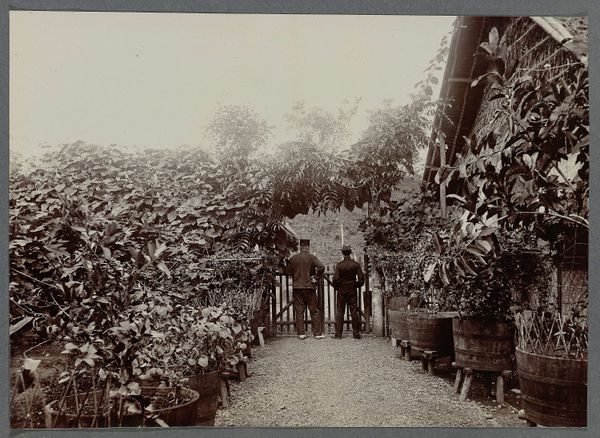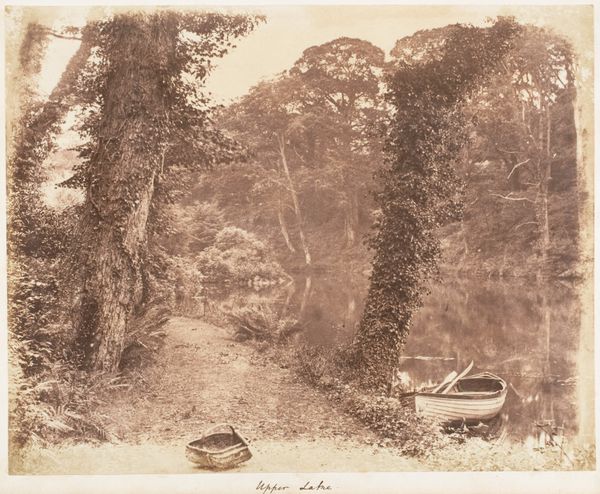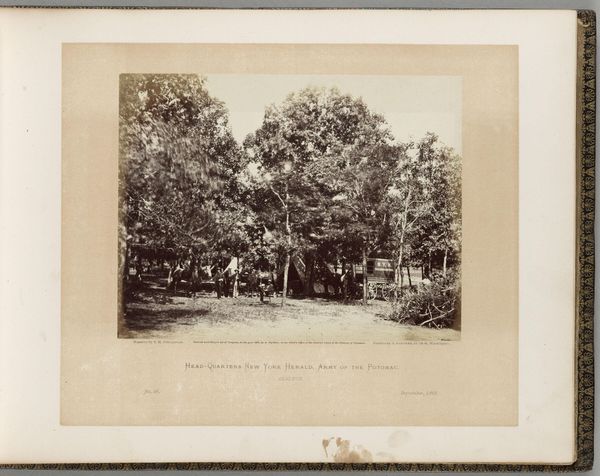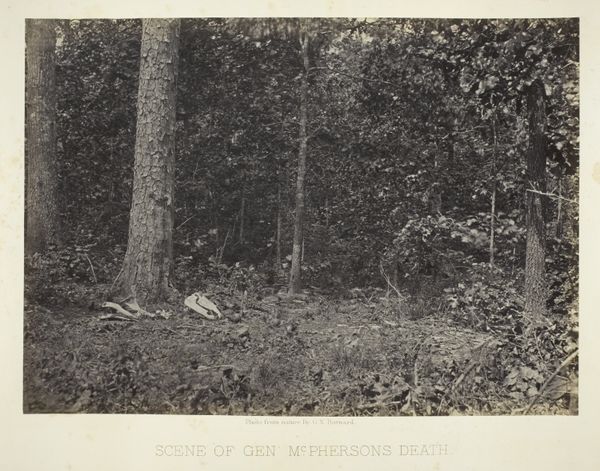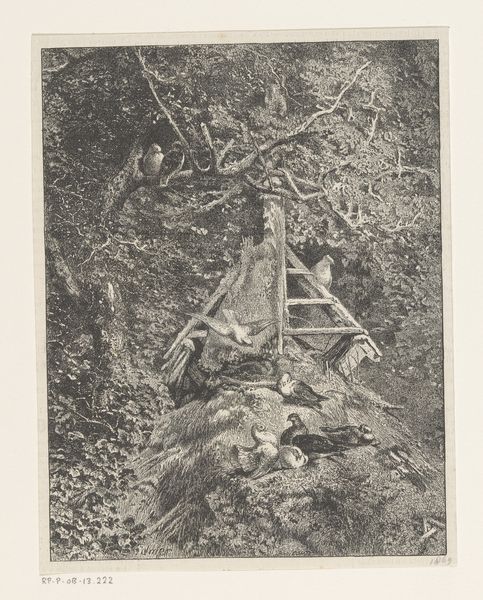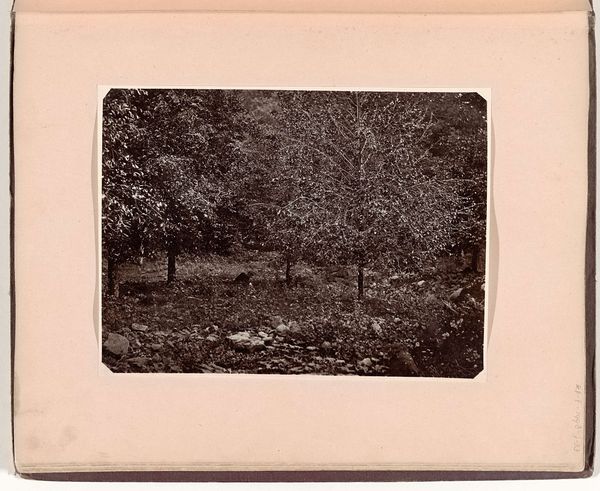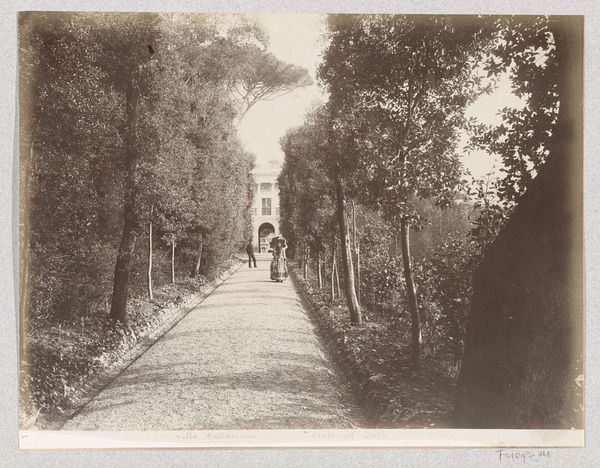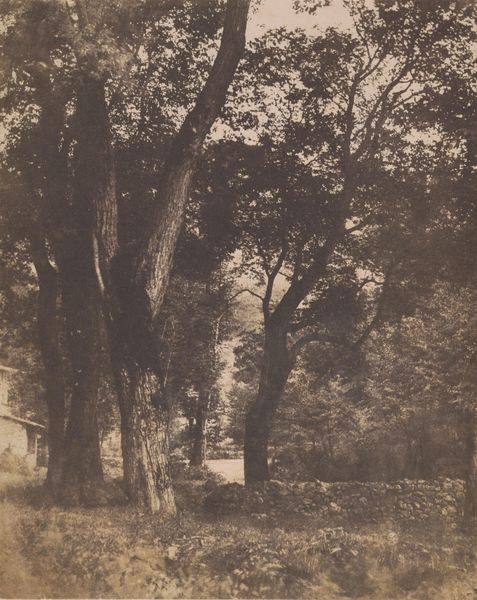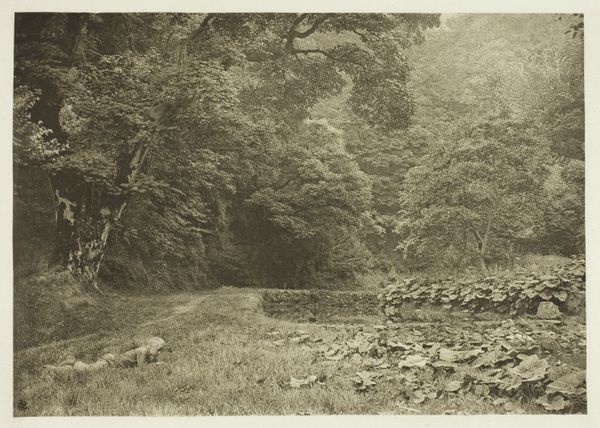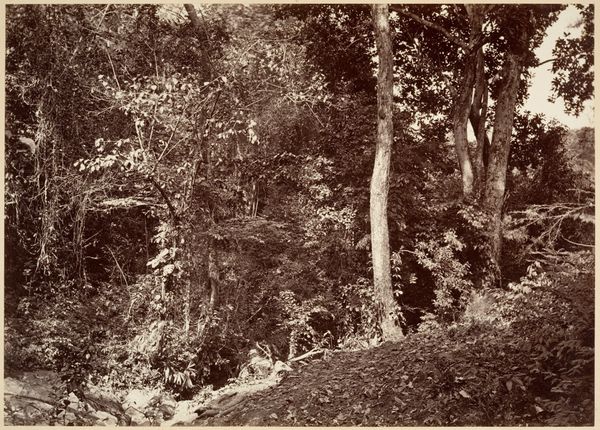
photography
#
portrait
#
pictorialism
#
landscape
#
photography
#
coloured pencil
#
mixed medium
#
mixed media
Dimensions: height 118 mm, width 169 mm
Copyright: Rijks Museum: Open Domain
Curator: Here we have Hendrik Doijer’s “Anton op sluis in achterdam van Ma retraite,” created sometime between 1903 and 1910. It’s a photograph. Editor: The tonal range is so delicate. It feels hushed and still. It almost evokes a lost world, and a feeling of nostalgia. Curator: It’s a fascinating example of Pictorialism. Doijer’s focus on the manual processes of photography brings this out in his practice. We see a blending of mixed media; it appears to include coloured pencil as well. Editor: The central figure, Anton, perched on the sluice. He's the modern figure in the Edenic, pictorial scene. I see an immediate tension; he feels both at home and somehow out of place, even a trespasser. Curator: Doijer himself moved to the Dutch East Indies, documenting colonial life, the sugar industry, and more intimate portraits, so these images have very strong contextual material connected to it. Photography afforded a novel approach to production as society continued on into the 20th century. Editor: Visually, the lock or sluice grounds the ethereal aesthetic, but water as a symbol—here held in check—hints at the potent, often overwhelming power of nature, and of this faraway place. It asks so much about man’s place within that ecosystem, as the subject stares on and perhaps contemplates his existence, and perhaps exploitation within the colony. Curator: Doijer often sought to portray local life, capturing everyday moments. The labor implied in a place like this. Editor: This tension resonates; even the very modern technology of the photograph here appears dreamlike. A past reality captured in the present day as if it was fading from the memory. Curator: Indeed, by engaging the chemical and material processes that made his works, we can appreciate them as documents of industry, colonization, and visual labor that took place at the turn of the century. Editor: Ultimately, Doijer captures this moment of colonial complexity, freezing time in a symbol. It gives us a glimpse into the psychological and environmental impacts and it persists in the modern view of the past.
Comments
No comments
Be the first to comment and join the conversation on the ultimate creative platform.
